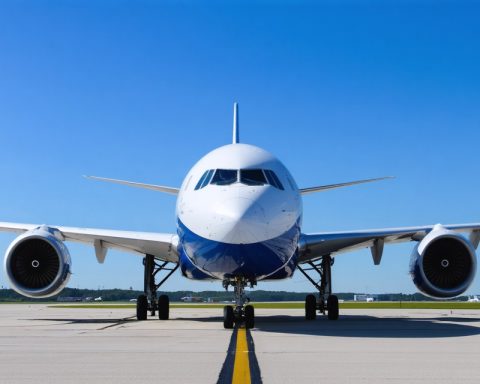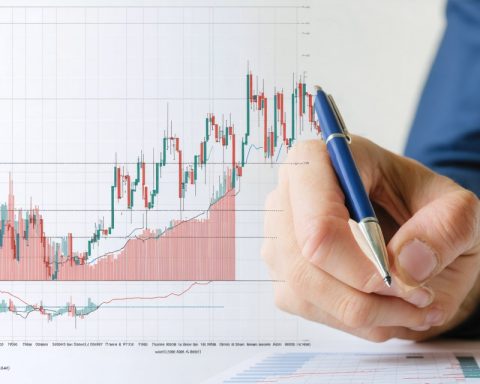- Boeing’s Chief Aerospace Safety Officer, Mike Delaney, is stepping down, marking a significant leadership shift within the company.
- Delaney played a critical role in guiding Boeing through regulatory challenges and emphasizing safety and innovation.
- CEO Kelly Ortberg views this transition as a pivotal moment for Boeing, emphasizing the need for stronger oversight and quality control.
- The next Chief Aerospace Safety Officer will be tasked with enhancing safety frameworks amidst evolving aerospace industry demands.
- Investors are closely watching, linking their confidence in Boeing to this strategic leadership change.
- Boeing aims to reinforce its commitment to safety, compliance, innovation, and industry trust as it moves into a new era.
A tectonic shift rumbles through the corridors of Boeing, as its seasoned Chief Aerospace Safety Officer, Mike Delaney, prepares to step down. His departure signals not just the end of an era but a dawn of renewed focus on safety and innovation within the aerospace titan.
For years, Delaney’s steady hands guided Boeing through turbulent skies, championing safety initiatives as the company weathered storms of regulatory scrutiny. Under his watchful eye, aviation’s intricate dance of technology and safety found its rhythm, even amidst heightened global scrutiny. Now, as he gears up for retirement, Boeing faces a pivotal moment, poised on the brink of transformation.
Boeing’s CEO, Kelly Ortberg, sees this transition as a crucial inflection point. With the company under intense pressure to bolster oversight and tighten quality controls, the upcoming appointment of a new Chief Aerospace Safety Officer is not just about filling big shoes. It’s about etching a future where safety and operational excellence are more than mantras—they’re unwavering commitments.
Boeing’s leadership transition promises ripples far beyond Seattle. Investors watch keenly, their confidence in the company hinging on this strategic move. The incoming officer will grapple with the task of reinforcing Boeing’s safety framework while navigating the ever-evolving demands of the aerospace industry.
In a world where the slightest misstep can unravel years of trust, Boeing’s promise shines clear: a steadfast dedication to innovation, unwavering compliance with industry standards, and a reinforced bond with regulators. As the company turns the page, it seeks not just to reclaim trust but to soar higher, led by a vision where safety is the wind beneath its wings.
Boeing’s Leadership Shift: How Safety and Innovation Will Propel the Aerospace Giant Forward
Real-World Use Cases
Boeing’s emphasis on safety and innovation has practical implications across the aerospace industry. Modern aircraft manufacturers face intense scrutiny in areas such as regulatory compliance, quality assurance, and technological advancement. These facets must not only ensure passenger safety but also improve operational efficiency and cost-effectiveness. Boeing’s leadership change offers an opportunity to implement cutting-edge safety protocols that can be models for the industry.
Market Forecasts & Industry Trends
According to a report by IATA, the aerospace industry is projected to experience significant growth, with global passenger traffic expected to double over the next two decades. As such, safety becomes a non-negotiable factor in sustaining this growth. Boeing’s transition comes at a pivotal time when technological advancements like AI, automation, and IoT are redefining safety standards and operational procedures.
Reviews & Comparisons
In the realm of aerospace manufacturers, Boeing faces fierce competition from Airbus, Embraer, and other firms. A comparative review by FlightGlobal showcases how Boeing’s innovation initiatives, especially around safety standard enhancements, give it an edge in maintaining trust and credibility. However, Airbus’s focus on sustainability and eco-friendly practices adds another dimension to the competition.
Features, Specs & Pricing
Boeing’s upcoming aircraft models, such as the 777X, are equipped with features aimed at maximizing safety and comfort. These include advanced turbulence dampening technologies, improved cabin pressurization systems, and state-of-the-art avionics. The pricing strategies involve balancing these innovative features with cost-efficiency to attract airline operators.
Controversies & Limitations
Boeing has previously faced controversies regarding the safety of its 737 MAX aircraft, which led to a global grounding. Resolving these controversies required stringent compliance updates and transparency with regulatory bodies. Critics argue that Boeing’s challenges were compounded by organizational pressures and oversight failures, highlighting the necessity for robust safety leadership going forward.
Security & Sustainability
With sustainability becoming a critical consideration, Boeing invests in alternative fuels, lightweight materials, and recycling initiatives to reduce carbon footprints. Security also remains paramount, with the company incorporating advanced cybersecurity measures to protect aircraft systems from potential threats.
Insights & Predictions
Industry analysts predict that Boeing’s focus on leadership renewal and strategic innovation initiatives will enhance its market position. The emphasis on safety and compliance will likely restore investor and consumer confidence, fostering a reputation of reliability and forward-thinking.
Tutorials & Compatibility
Understanding Boeing’s innovation strategies can benefit stakeholders across the aerospace industry. Tutorial sessions and workshops on best practices in safety and technological integration are vital for operators and regulators alike. Ensuring compatibility with emerging technologies will be essential in maintaining industry leadership.
Pros & Cons Overview
Pros:
– Renewed focus on safety protocols and innovation
– Potential for market leadership through strategic changes
– Enhanced investor confidence with leadership transitions
Cons:
– Navigating legacy issues and past controversies
– Maintaining competitive edge against rival manufacturers
Actionable Recommendations
1. For Aviation Professionals: Stay updated on Boeing’s safety enhancements and technological integrations. Participate in industry workshops to learn best practices.
2. For Investors: Monitor Boeing’s leadership announcements and strategic initiatives closely to gauge future growth prospects.
3. For Consumers: Take note of Boeing’s advancements in passenger safety and comfort, which are likely to impact travel experience positively.
For more insights into the aerospace industry and Boeing’s strategies, visit Boeing and IATA.









